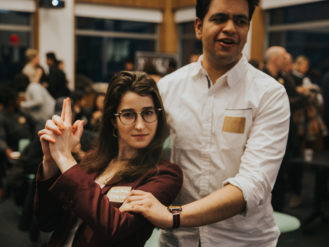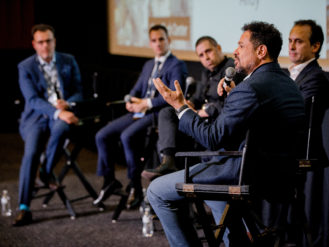Inside RLab, a Place to Create Virtual New Realities
The Brooklyn VR center is designed to help the city seize the opportunities in a field "ready for explosive growth"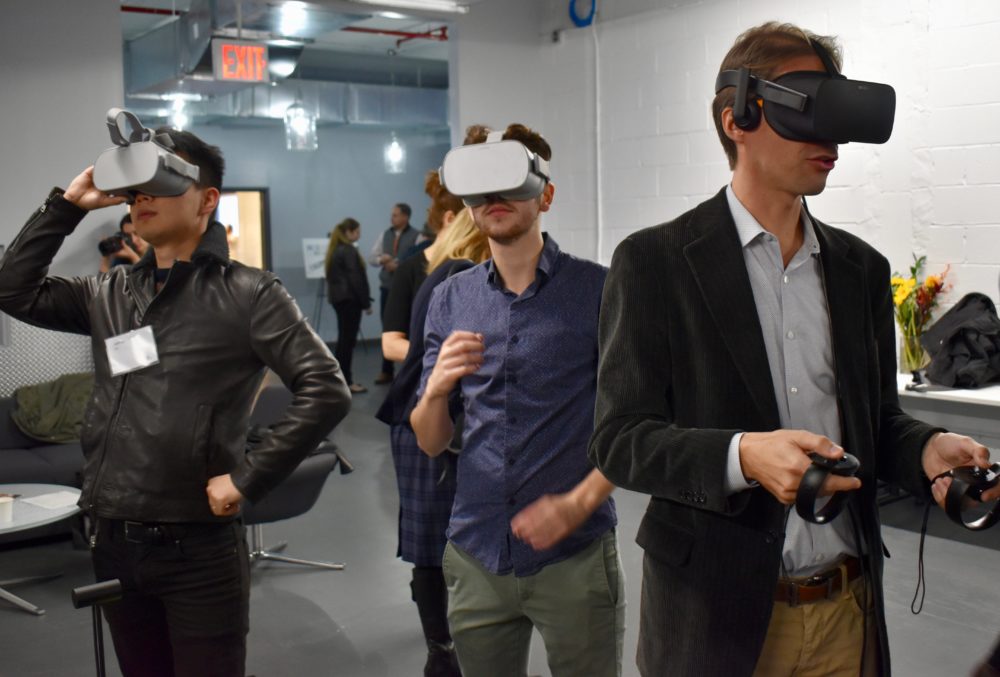
More than 30 exhibitors showed off their VR/AR projects at the newly launched RLab (Photos by Steve Koepp)
I reached out and touched a human cadaver yesterday, using a scalpel to dissect a deltoid muscle. I might have been more squeamish about the experience, but this was not a human body of the deceased kind. It was a corpse created in virtual reality, viewed through a VR headset. Yet it was vividly real.
“It’s intended to replace cadaver dissection, because that’s kind of expensive,” explained Sam Seidenberg, a software engineer for Medivis, a Brooklyn-based company developing an educational product called Anatomy X. “You still get the same three-dimensional exploration without having to deal with an actual human cadaver.”
Seidenberg and his company were among 30 exhibitors demonstrating their projects at the launching of RLab, the first city-funded lab in the U.S. dedicated to virtual and augmented reality (VR/AR). When completed next year, the lab will house 16,500 sq. ft. of co-working labs, classrooms and studios in a former manufacturing building in the Brooklyn Navy Yard.
At the launch event, hundreds of visitors tried on headsets to get a sense of things to come, inspiring many waving arms and swiveling heads as they explored virtual worlds ranging from construction sites to medieval sword fights.
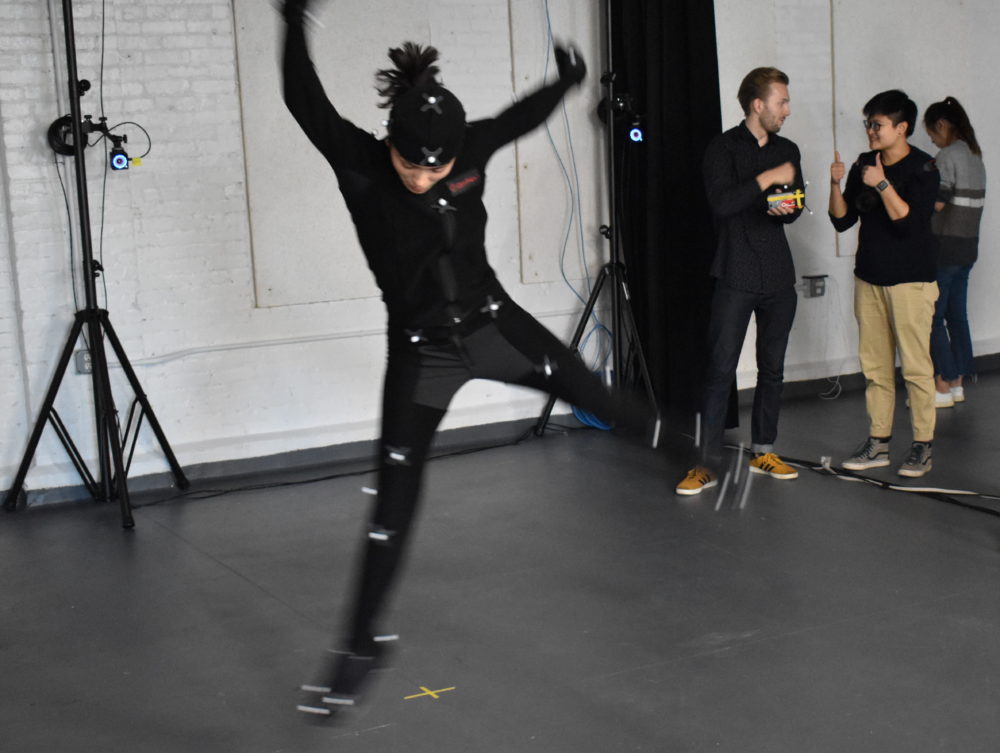
A dancer wearing motion-capture sensors spun around to create a 3D recording
In a nearby space, a dancer/technologist spun about in acrobatic patterns, her body fitted with motion-capture sensors to enable a computer to record a 3D rendering of her movements. The exhibit was the work of an NYU class that seems to represent the kind of cross-disciplinary creativity and community that’s expected to thrive at RLab. The class brings together both engineering and art students, who learn motion-capture techniques, graphics rendering, and the conceptual development to create stories in VR, said class’s instructor, Todd Bryant.
If the new lab is a success, it will have many beaming parents. It represents a $6.5 million investment by the New York City Economic Development Corp. (NYCEDC) and the Mayor’s Office of Media and Entertainment (MOME), and will be administered by Brooklyn’s NYU Tandon School of Engineering, with a participating consortium including Columbia University, CUNY and The New School.
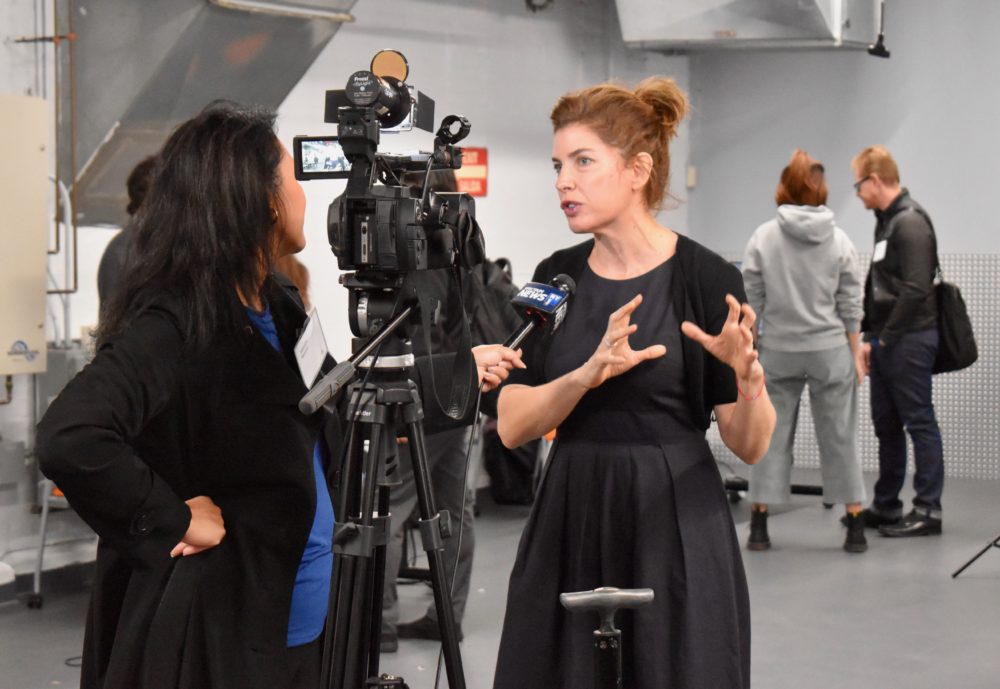
Julie Menin, commissioner of the Mayor’s Office and Media and Entertainment, said the new lab will help create jobs by providing “a pipeline into these fields”
Super Ventures, an early-stage fund for VR/AR ventures, will support startup companies in a business accelerator program on the site. “This is a product of years of work by many, many individuals,” said Justin Hendrix, executive director of the NYC Media Lab, who will serve as RLab’s interim executive director.
Several of the speakers at the event emphasized that, while many projects are already underway for the site, it represents an incubator for ideas that haven’t been hatched yet. “This is a really proud day for NYU Tandon and all our partners,” said the school’s new dean, Jelena Kovačević. “This will be the epicenter for things we can’t even contemplate today.”
Mary Boyce, dean of Columbia University’s Fu Foundation School of Engineering, did offer a sneak preview that VR/AR enthusiasts will welcome. Researchers at her school are working on new materials and optics to make VR/AR headsets less cumbersome, she said.
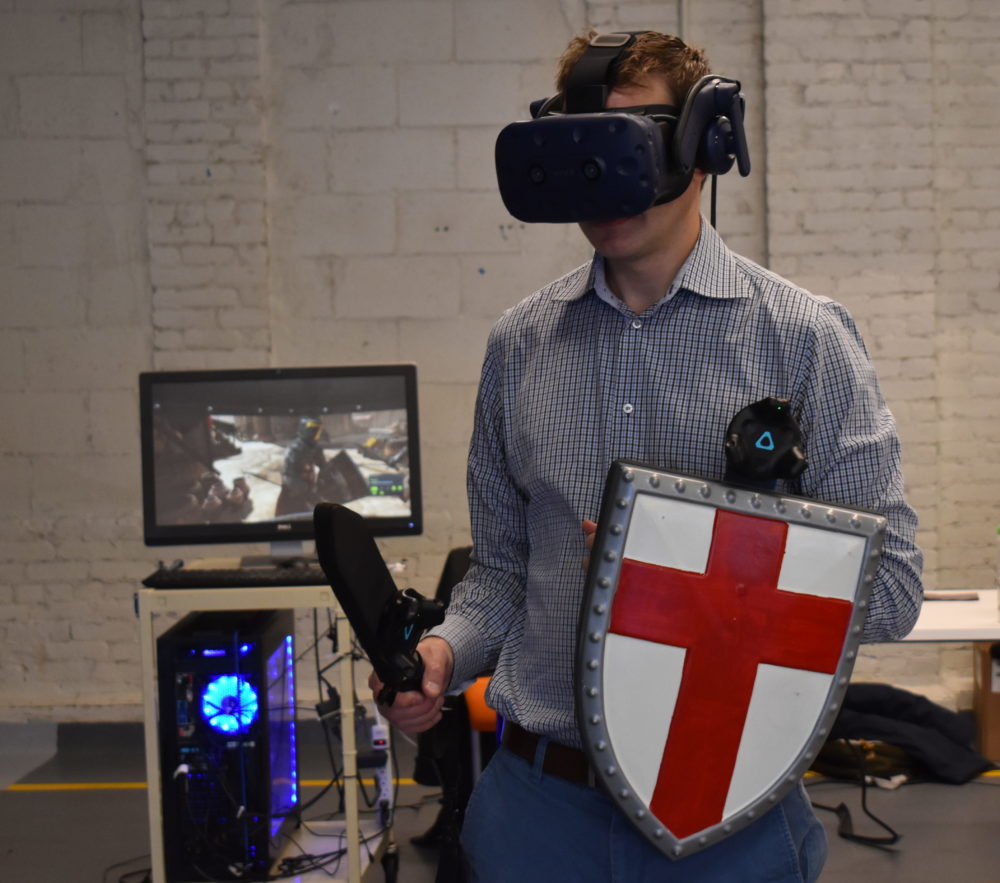
A willing participant in the VR version of Knightfall, a History Channel series about the Knights Templar. The game will be deployed for “location-based experiences,” for example in the lobbies of Imax theaters, said Timothy Call, a senior director of multimedia for A+E Networks
For the Navy Yard, RLab will provide a kind of greenhouse for producing new ideas, startup companies and trained workers to help fulfill its plans to grow in the next few years from 9,000 employees at 400 companies to 20,000 people at about 1,000 companies.
“We’ve been trying to woo NYU to the Navy Yard for quite some time,” said David Ehrenberg, the Navy Yard’s president and CEO, who recounted the yard’s evolution from building battleships to creating tech-driven products. “We don’t know what will take off, so we try to create a diverse ecosystem.”
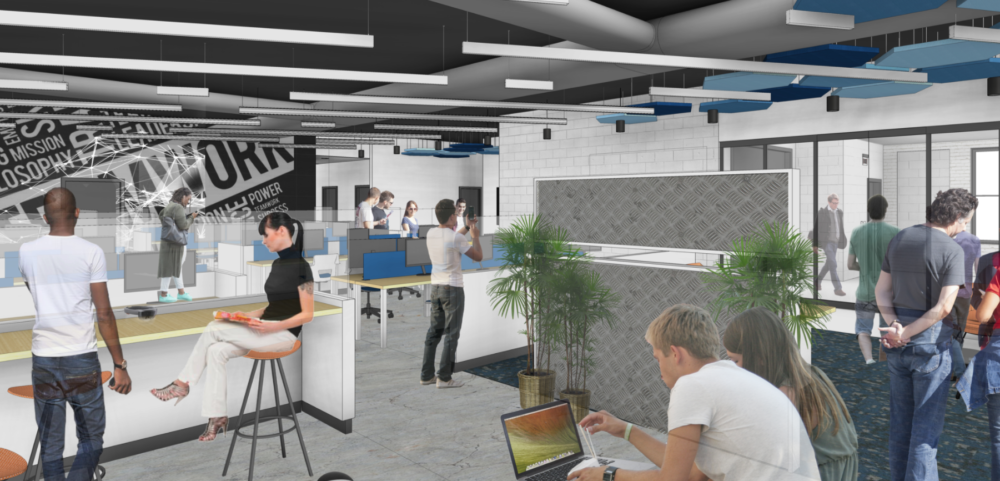
When completed next year, the 16,500-sq.-ft. space will provide labs, studios and classrooms on the third floor of Building 22 in the Navy Yard
The takeoff of VR/AR seems well underway. “Investors have poured $7.2 billion into XR startups in the last 12 months alone,” said Ori Inbar, founder and managing partner at Super Ventures, who helpfully explained that the term XR, or extended reality, is becoming a kind of umbrella term for virtual-, augmented- and mixed-reality technologies. “Every once in a while a new technology revolution comes along that changes everything. XR is ready for explosive growth,” he said, adding, “NYC has all the ingredients you need to be the epicenter of XR.”
Much of the city’s motivation for backing the venture is about creating jobs. Mayor de Blasio, in his 2017 New Yorks Plan, committed to creating 100,000 good-paying jobs over 10 years, including 30,000 jobs in tech fields.
Indeed, while many of the initial applications of XR are in the realm of fun and games, many of the exhibitors at the RLab opening showed apps that are being embraced by mainstream industry. InsiteVR, for example, is developing a digital platform for the construction industry that allows architects and engineers to walk through planned buildings together, even if they’re dialing in from far-flung continents.
Even the field of journalism may benefit as it strives to reinvent itself. “We are seeing tremendous interest from journalism organizations in experimenting with VR and AR,” said Sarah Bartlett, dean of the Craig Newmark Graduate School of Journalism at CUNY. “We’re excited to help expand the community that participates in that experimentation.”
Perhaps the most epigrammatic thing said during the heady event was from Inbar, who emphasized the reality-based aspect of it all: “XR isn’t about technology, it’s about life.”





